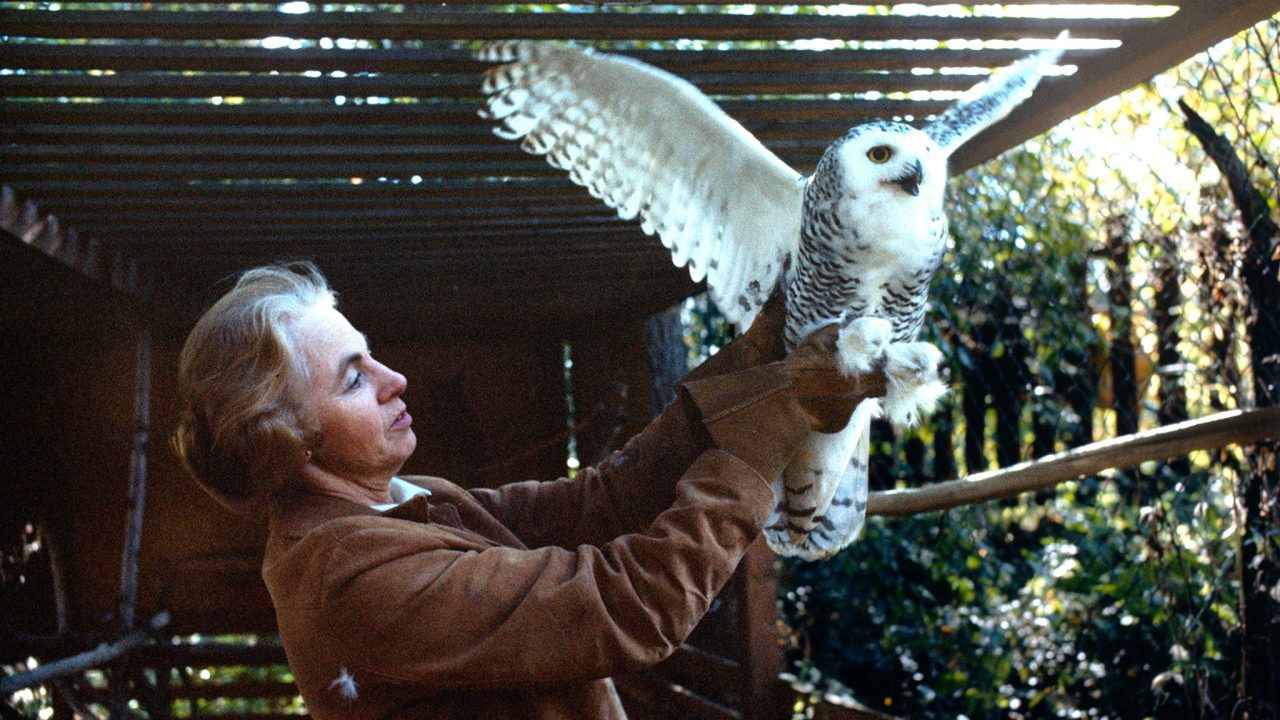
The Lady and the Owl: Rehabilitating Injured Birds | Curator’s Perspective
The Lady and the Owl: Rehabilitating Injured Birds | Curator’s Perspective
One of the things I love about the NFB’s film collection is the number of small, personal films that feature ordinary Canadians doing extraordinary things. These types of documentaries were very common in the 1960s and 1970s. As Earth Day is upon us again, I thought I would highlight one of these films from the 1970s, the short doc The Lady and the Owl.
Quite simply, the film is about a retired couple living near St. Catharines, Ontario, who devote their lives to the care and rehabilitation of injured owls. The McKeevers, Kay and Larry, had been doing this selfless work for 10 years at the time of filming.
Director William Canning had been working on another project in the area when he heard about the McKeevers. He was intrigued so he contacted them. After meeting them, he realized that their story would make a very interesting film.
He later submitted a proposal to the NFB to make a short doc for the non-theatrical market (for screenings in schools, libraries, service clubs, etc.). The proposal was accepted by executive producer Colin Low, so in October 1974, Canning and crew travelled back to the McKeever home, located on an estuary near St. Catharines, and shot for a week.
Kay McKeever is a mesmerizing person. When asked why she does this work, she answers that she is fascinated by these creatures and is trying to do her best to keep owls from becoming extinct. She explains that they’ve cared for as many as 100 injured owls at a time at their sanctuary. She also says that they release some 40 percent of these owls back into nature. Most of the injuries to the owls were caused by gunshots or being hit by cars. One of their owls was injured at an airport in a collision with an airplane.
The McKeever house also includes dogs, a parrot and two pet owls. The McKeevers do not recommend keeping owls as pets as they can be very messy. They only name the owls that cannot be released into the wild. Those stay on the property (outdoors) to live out their remaining years.
The McKeevers spend most of the film explaining the behaviour of owls and showing us the various breeds, including the smallest owl in the world, the elf owl, weighing only 40 grams! We find out that owls mate for life and are excellent parents. It is a misconception that owls hunt at night. They prefer to hunt at dusk, just as the light is fading, or in the early morning.
The McKeevers comment that many people complain about the extinction of wildlife but do nothing about it, whereas they are happy to do something to protect these incredible birds. When preparing a bird for release, they make sure the owls are well enough to catch live prey, or else they would not be able to survive on their own.
Owls mainly eat rodents, and live ones if possible, but they can also eat other meat. There is a stunning moment early in the film when Kay opens a giant freezer in her basement to reveal hundreds of frozen dead mice and rats! Owls help control rodent populations, which is to the benefit of all of us.
The Lady and the Owl, William Canning, provided by the National Film Board of Canada
Although the film was destined for the non-theatrical market, it was shown to the CBC, who were very impressed. They broadcast it on Tuesday, September 7, 1976, across the entire network, to very good reviews. It was also entered in several film festivals, winning an award at the International Film and Video Festival in Columbus, Ohio. A reviewer for Screen Arts (Seneca College) called it “…a refreshing documentary of a curious enterprise.”
I invite you to watch this simple, unassuming film about two extraordinary Canadians doing their part to help animals and protect our planet.
Enjoy, and happy Earth Day.



